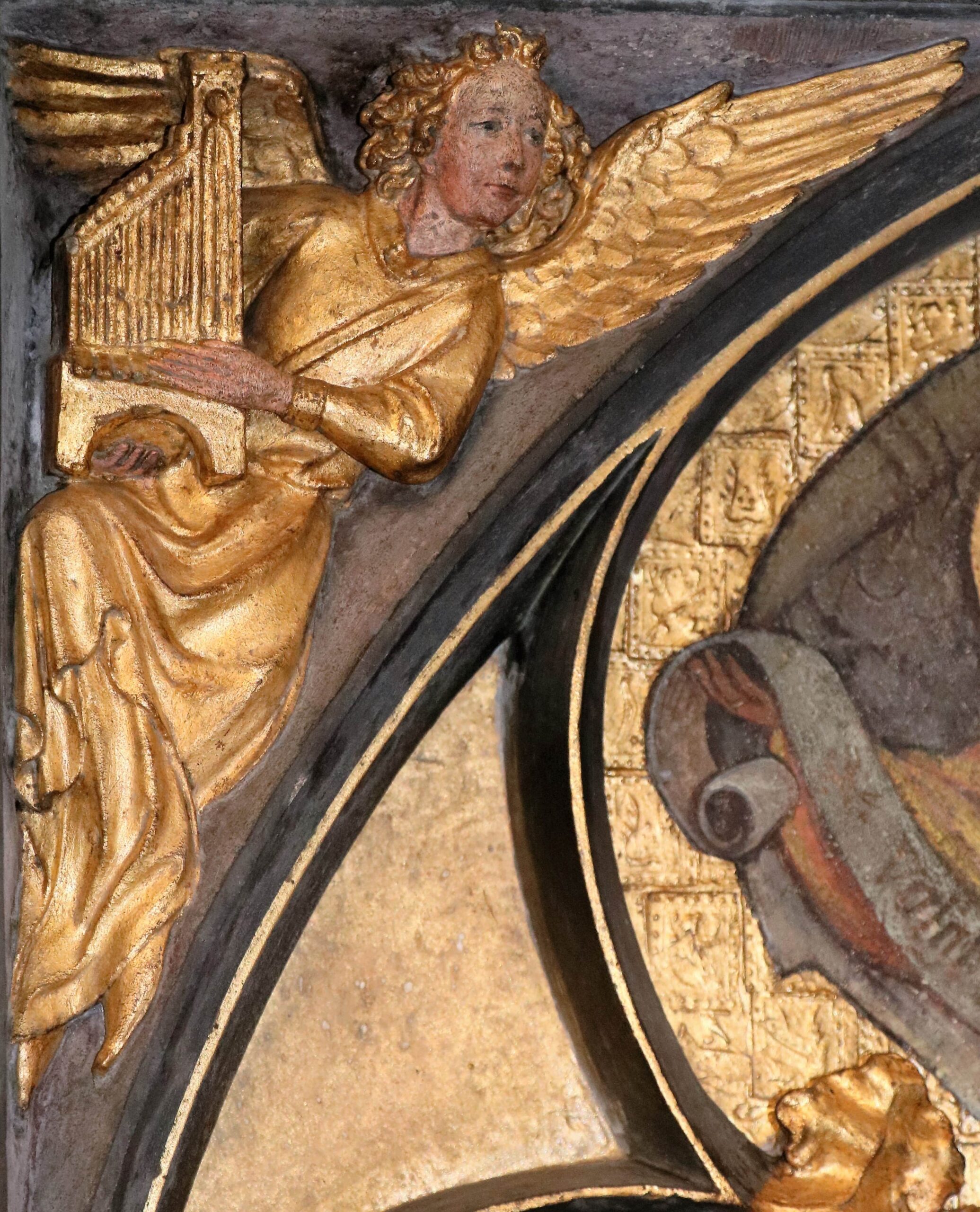The grand organs
The Sablon church has a great musical tradition dating back to the 15th century, as seen in several choir spandrels representing instruments of the period, such as the organetto.
In the 17th century, the famous Fioccos composers provided the musical direction at the Court of Brussels and the Sablon church. In 1700, the first Belgian public opera house was inaugurated in Brussels: the Théâtre de la Monnaie. Fiocco was its first musical director. His funeral was celebrated at Sablon, the church to which he owed his fame.
he church had organs from the 16th century, but the current large organs in the gallery were made in 1763 by the organ builder Jean-Baptiste Barnabé Goynaut. The sideboard is by Brussels carpenter Jean Van Gelder. It is the last buffet from this era remaining in Brussels. Several restorations have been undertaken, and in 1989, the restoration of the organ was entrusted to the Luxembourg organ maker Georg Westenfelder. He preserved the spirit of the instrument, only adding a pedalboard operating seven rows of pipes arranged in a discreet cabinet placed at the back of the historic buffet. his “forty-one stops” on three keyboards and pedals, made up of 2,520 pipes, accompanies the three Sunday masses and fills the nave of the church with its sound during concerts. The renovation was made possible thanks to the patronage of the Morgan Guaranty Trust. The medallion at the top of the organ represents Saint Cecilia, patroness of musicians.
